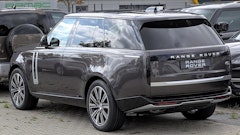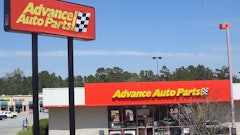
Toronto, Ontario — April 22, 2017 — This week’s Autonomous Report looks at why Duncan Stewart of Deloitte thinks autonomous vehicles (AVs) may make us “lazy, bored and inattentive,” how Mazda brings a different perspective to self-driving cars, more highlights from the second annual Canadian conference on autonomous vehicles and much, much more!
– The Canadian Insurance Accountants Association (CIAA) held an educational event on information technology impacts recently in downtown Toronto. One of the messages delivered: Autonomous vehicles are coming, but there is no need for property and casualty insurers to panic that their auto books are going to quickly disappear. According to a report by Canadian Underwriter, “If you feel a threat because your whole automotive P&C book is going away, it’s not going away any time soon,” Andrew Lo, President and COO of Kanetix was quoted as saying. “Plenty of work remains to be done on artificial intelligence and HD mapping … Then you need the ubiquitous vehicle-to-vehicle communication, because when you’re driving at a hundred kilometres an hour, and a driver has to take over because the car can’t figure out what to do next, systems must be in place … Twenty or 30 seconds may be needed for everything to reorient to ensure vehicles in front alert others to a problem ahead and all vehicles have time to slow down.”
Duncan Stewart of Deloitte Canada, said that “Level 5 autonomous (capable of navigating roads without any driver input) vehicles are not right around the corner …’There are different estimates as to when Level 5 vehicles will available,’ Stewart said during his presentation. Some say this may be as much as 30 year away.” What is coming soon, though, is automatic emergency braking (AEB) according to Stewart. “While waiting for Level 5 autonomous vehicles to arrive, ‘a $500 technology (AEB) means that you will still have accidents, but at lower speeds, which has a lot of implications on deaths, injuries, vehicle damage, all that kind of stuff’.”
Another issue: “When you have something that almost never breaks, almost never fails, almost never goes wrong, human beings are actually really bad. We get really lazy, bored and inattentive,” Stewart was quoted as saying. “As self-driving cars get better and better and better, we’ll actually be less alert and when they do fail, we’ll be less good about seizing control back.”
– Bloomberg reports that, “When it comes to ‘the future of transportation,’ Mazda and Porsche got the memo—they just decided to go another way … Mazda, for one, is sticking to its mantra: ‘Driving Matters’ and doubling down on transmissions tied to stick shifts.”
Masahiro Moro, President and CEO of Mazda North American Operations, was quoted as saying that, when it comes to AV tech, “It’s a key technology for all manufacturers and Mazda agrees it’s going to be very important. We have full-scale autonomy in development right now. But how we apply this technology will be a little unique. We believe driving pleasure should never die. And we’re selling our products to a core customer who loves driving … If anything happens to the driver, the system will override immediately to bring the car to a safe place … Mazda’s vision of autonomous driving is not bringing you from A to B while you are reading. That’s not Mazda’s way.”
– This past week a company called Marble went public. The firm was co-founded by a trio of engineers who met at Carnegie Mellon’s Robotics Institute, and then went on to work on self-driving cars for DARPA. Their company is building AVs that will drive along sidewalks to deliver goods around a neighbourhood. Another company in this space is Starship Technologies, from Estonia. This company has been testing robots in US and European cities since late 2015. Domino’s has also started testing a pizza delivery AV in a few European cities.
– Last week Collision Repair magazine reported on some of the highlights from the first and second days of Automated Vehicles 2017: Planning the Next Disruptive Technology in Toronto. One of the sessions was all about, “Automated Goods Movement: Cities, Planning, and Policy.” The panelists “considered the impact self-driving technology is having on the movement of goods,” from legal, regulatory and legislative perspectives. They may be innocuous at first, but get enough of these delivery drones zipping around and it starts to have a lot of impact on traffic, both on the road and the sidewalk.
Paul Godsmark, Chief Technology Officer of the Canadian Automated Vehicles Centre of Excellence (CAVCOE), noted that beyond the small AVs that will show up on sidewalks, “Mercedes is doing a delivery van that would small drones on board that then unpack the truck.”
Godsmark also noted that these small ground level AVs will, “… generate huge amounts of data. These AVs are going to see everything on the street and over time. Everything is going to be recorded. The value of the data will be many times the value of the vehicle itself.
Another panelist, Michael Polowin, of the law firm Gowlings, noted that, “The legal and regulatory structure [to allow this] is a mess. We have a lot of work to do. What are you going to do when tons of these little coolers on wheels are running down the sidewalk? There are questions about liability … Look at the regulatory schemes right now … there is a prohibition on the use of a sidewalk by any vehicles. Are we going to allow ‘last mile delivery’ on these paths, which are meant for pedestrians? Or do we put them on bike paths?”
Polowin also asked, “When AVs and human drivers share the road during the mixed period the consequence in liabilities are unimaginable. We just haven’t dealt with that, the designers, the manufactures or the municipal road designers.”
Other questions Polowin raised: The software these AVs will rely on will run on software generated by municipal employees, who may not have inputted dimensions perfectly. And, what to do about The Highway Traffic Act, which, as it is currently written, is dependent on having a driver?
Please see “Minister Garneau at AV conference: ‘We need to be ready‘” for our report on the first day of the conference, and “Autonomous vehicles may ‘eliminate 93 percents of collisions’” for highlights from day two.





















